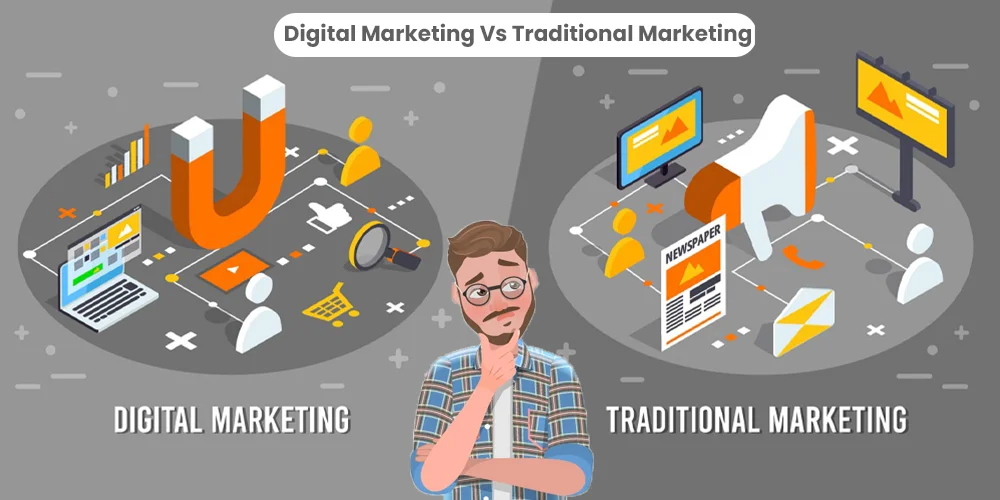Due to the increase of the internet and the widespread use of smartphones and social media platforms, the landscape of business has dramatically changed.
In today’s digital age, the war of business success rages between two giants: digital marketing and traditional marketing. The way businesses connect and influence their potential customer has been changed. To reach the harbor of success in this ocean, businesses need to learn to navigate both of these boats together and strategically.
This can only be realized by including the variations in marketing strategies of both and being able to integrate and deploy them as per requirement. Let’s delve into the pros and cons of each of these and figure out a way to make the best use of each.
The Power of Traditional Marketing
Although digital marketing has taken over the marketing world, age-old methods of traditional marketing still hold their ground. Traditional marketing involves the use of physical mediums like television, billboards, radio, print media, and direct mail to create brand awareness and influence potential customers.
Brand Awareness
Traditional marketing methods provide access to a broad audience thus building brand awareness and credibility across the country. Traditional marketing is especially effective for local businesses with regional focus like brick-and-mortar stores.
Trustworthy
The real experience offered by traditional marketing inspires trust among customers. Watching billboards, flipping pages of a magazine, and holding a folder in hand not only enhances credibility but also leaves a long-lasting impression in the hidden minds of potential customers.
Many individuals, especially older ones still cannot bring themselves to trust on digital platforms.
Incalculable analytics
One of the major drawbacks of traditional marketing methods is their inability to give a precise account of effectiveness. For instance, it is not possible to know the exact number of people who have watched an advertisement on TV or listened to it on the radio.
This makes it hard for business to determine their return on investment with accuracy.
The Rise of Digital Marketing
Digital marketing has thoroughly revolutionized the way by which business is done. It leverages the power of the internet and social media platforms to advertise products and services. It contains a scope of strategies and platforms such as online advertisements, content marketing, email marketing, and social media marketing.
Digital marketing capitalizes on the ever-increasing online presence of individuals across the world and allows businesses to connect with customers on an international scale.

Cost-effective
Digital marketing costs importantly less than traditional marketing, allowing small businesses to compete with business tycoons on a level playing field.
Global Reach
Digital marketing surpasses all geographical barriers, providing access to international audiences without extra infrastructure costs.
Targeted Advertisement
By leveraging social media platforms, businesses can tailor their message to specific audiences that have the proclivity to engage with their brand. Targeted social media campaigns and online advertisements designed by keeping in mind the demographics, behaviors, and interests of people result in a pronounced rise in sales.
Exact Analytics
Digital marketing allows one to keep a record of the progress of a campaign in real-time. Businesses can have a granular analysis of what’s working and what’s not working by reviewing the data about customer behavior, conversion rates, engagement rates, etc., and optimize their campaigns accordingly.
Interactive Communication
Interaction between companies and customers was a serious challenge before the digital age. However, now companies can directly interact individually with customers via personalized emails, chatbots, and social media platforms. Such personalized interactions inspire trust and customer loyalty.
Traditional Marketing and Digital Marketing
Neither Digital marketing nor traditional marketing can be preferred over the exclusion of others, rather the key lies in maintaining the right balance between the two.
Moreover, as technology continues to evolve the difference between traditional and digital marketing is fading, for instance, digital billboards are now becoming very common and TV advertisements have altered to digital platforms.
Ultimately the businesses that will thrive in this developing landscape are the ones that can successfully integrate elements of both traditional and digital marketing strategies.
